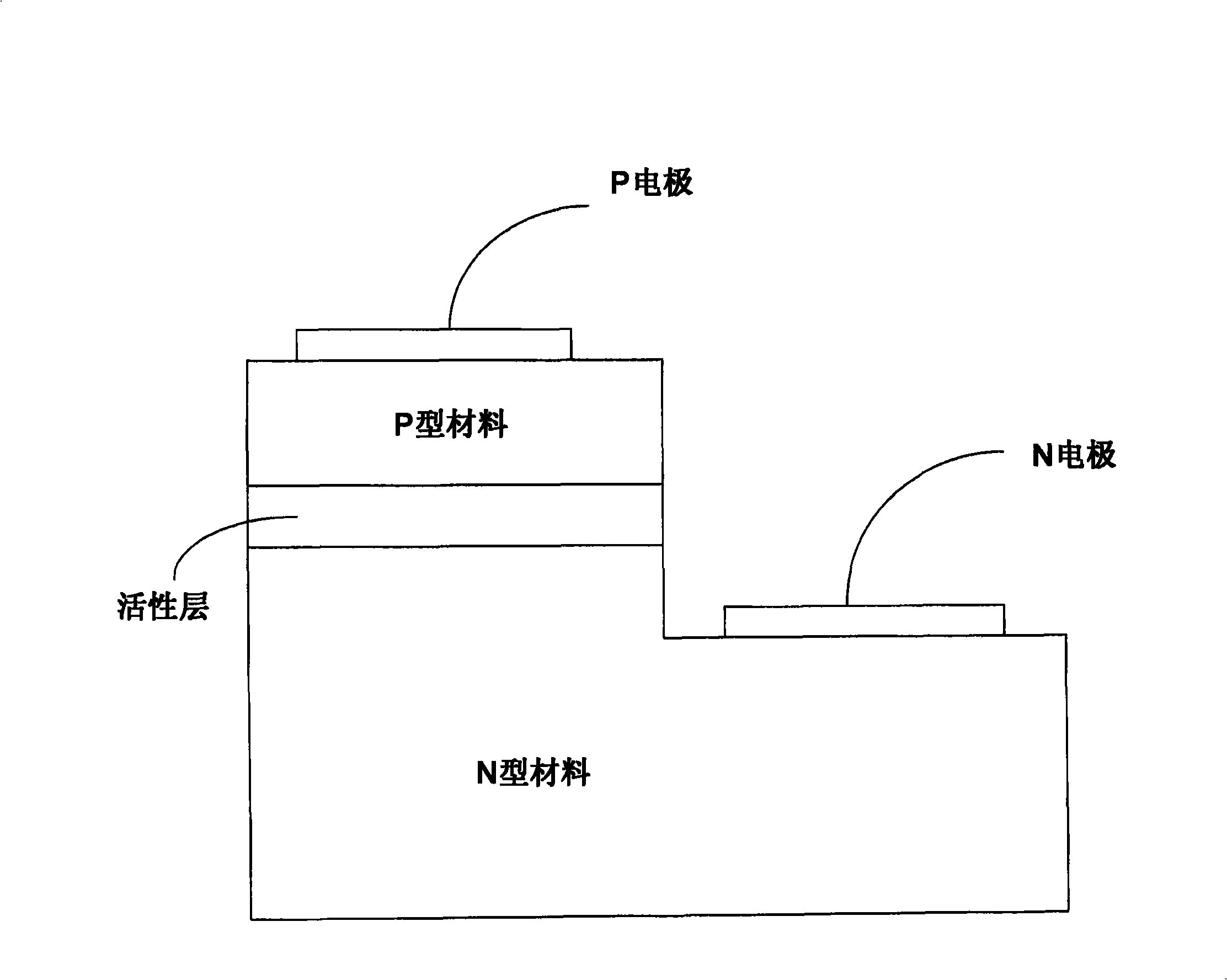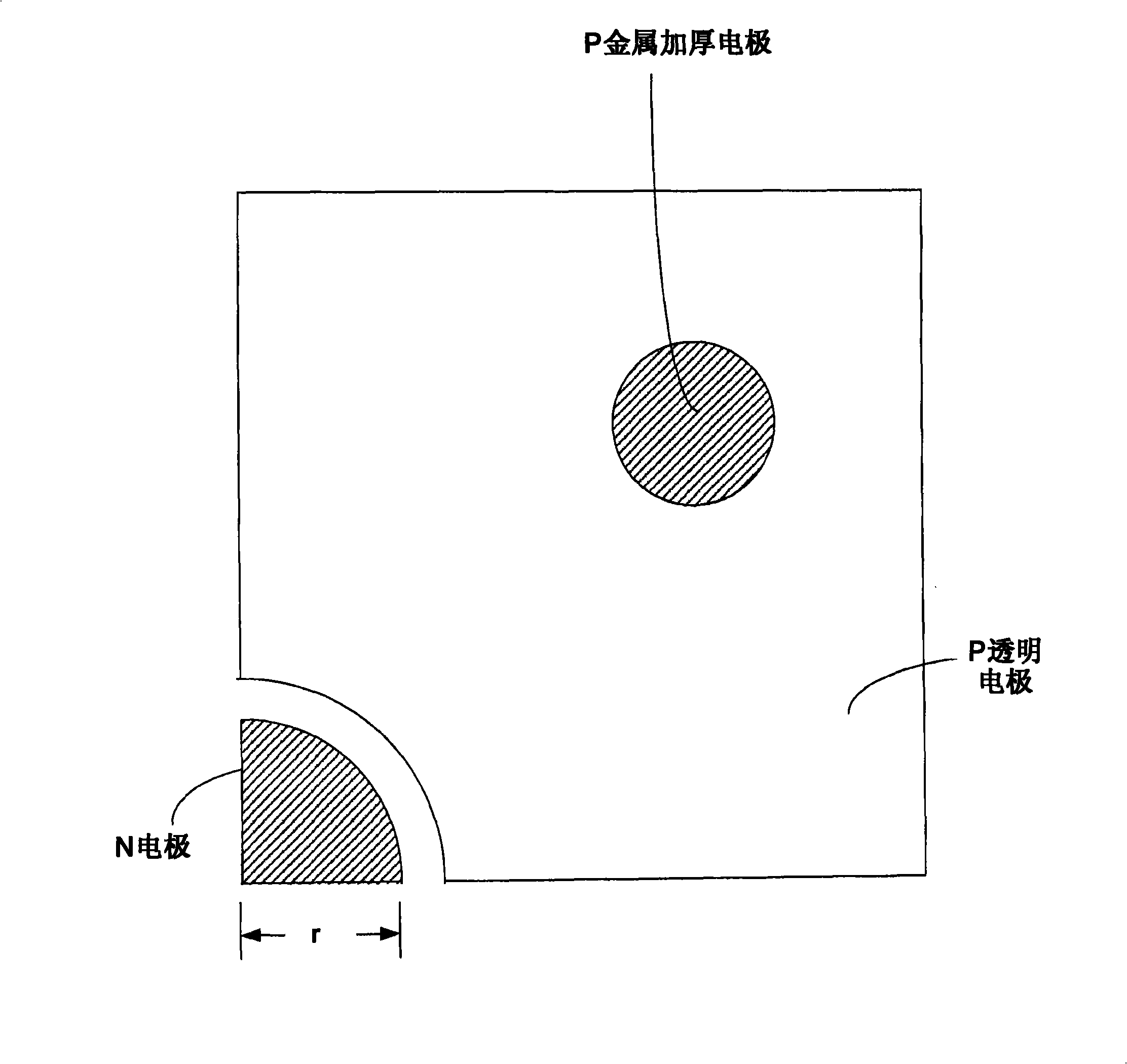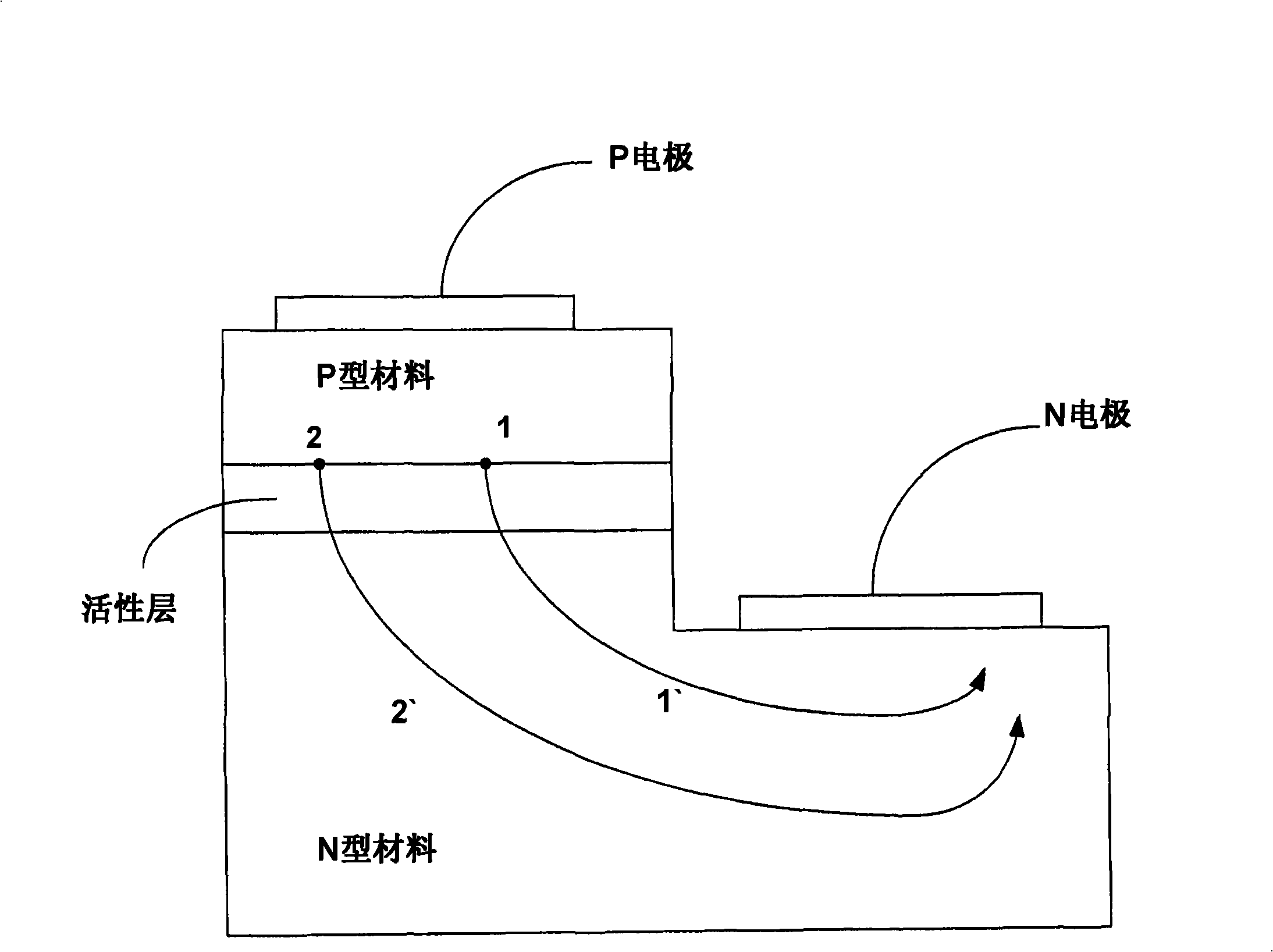LED chip capable of improving light-discharging rate and preparation technique thereof
A technology of LED chips and light-emitting layers, which is applied to electrical components, circuits, semiconductor devices, etc., can solve problems such as uneven light-emitting performance of LED devices, and achieve the effect of improving the side wall area
- Summary
- Abstract
- Description
- Claims
- Application Information
AI Technical Summary
Problems solved by technology
Method used
Image
Examples
Embodiment Construction
[0027] Figure 4 What is shown is a top view of an LED chip structure according to the present invention. Such as Figure 4 As shown, the LED chip includes a P electrode and an N electrode, wherein the N electrode is located (or approximately located) at the geometric center of the chip, and the P electrode includes a transparent electrode and a thickened electrode, wherein the transparent electrode is located around the N electrode. As mentioned earlier, when the LED is working, the current flowing into the P electrode tends to choose the conduction path with the least resistance to reach the N electrode. Therefore, it is better to enter the N-type material layer from the boundary of the "hollow" ring in the transparent electrode. , and the effect of entering the N-type material at a distance from the boundary of the central ring is secondary. Therefore, it can be considered that the luminous effect of LEDs in a certain place is negatively correlated with the "distance to t...
PUM
 Login to View More
Login to View More Abstract
Description
Claims
Application Information
 Login to View More
Login to View More - R&D
- Intellectual Property
- Life Sciences
- Materials
- Tech Scout
- Unparalleled Data Quality
- Higher Quality Content
- 60% Fewer Hallucinations
Browse by: Latest US Patents, China's latest patents, Technical Efficacy Thesaurus, Application Domain, Technology Topic, Popular Technical Reports.
© 2025 PatSnap. All rights reserved.Legal|Privacy policy|Modern Slavery Act Transparency Statement|Sitemap|About US| Contact US: help@patsnap.com



